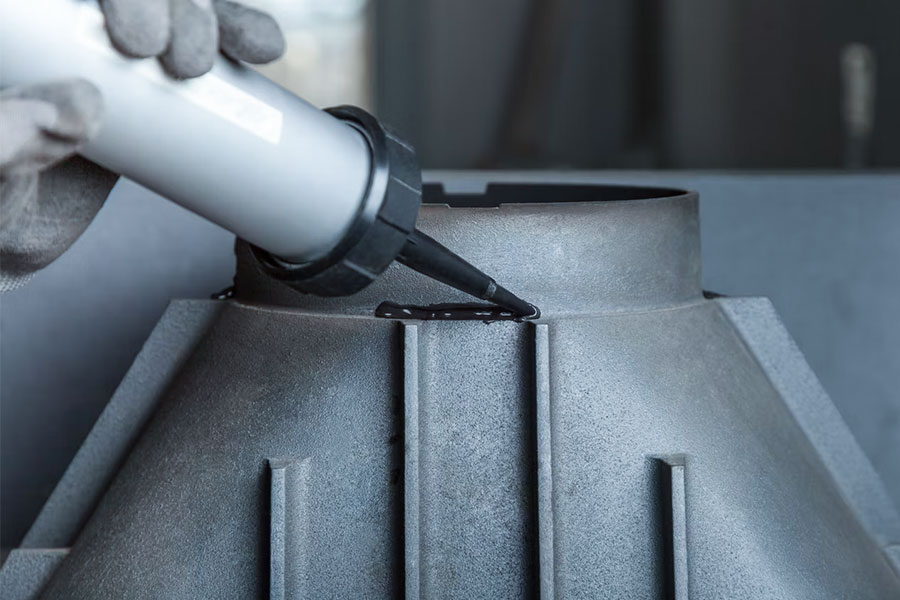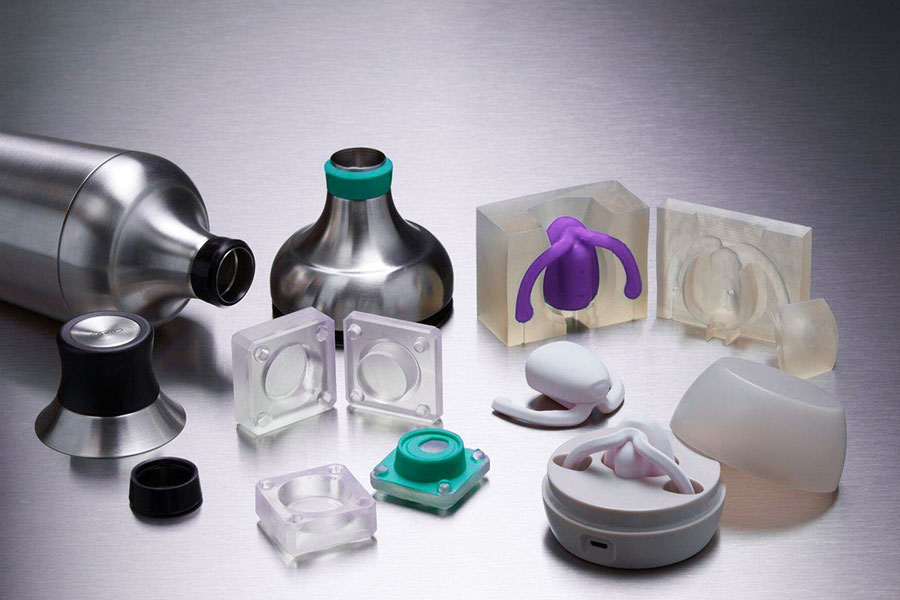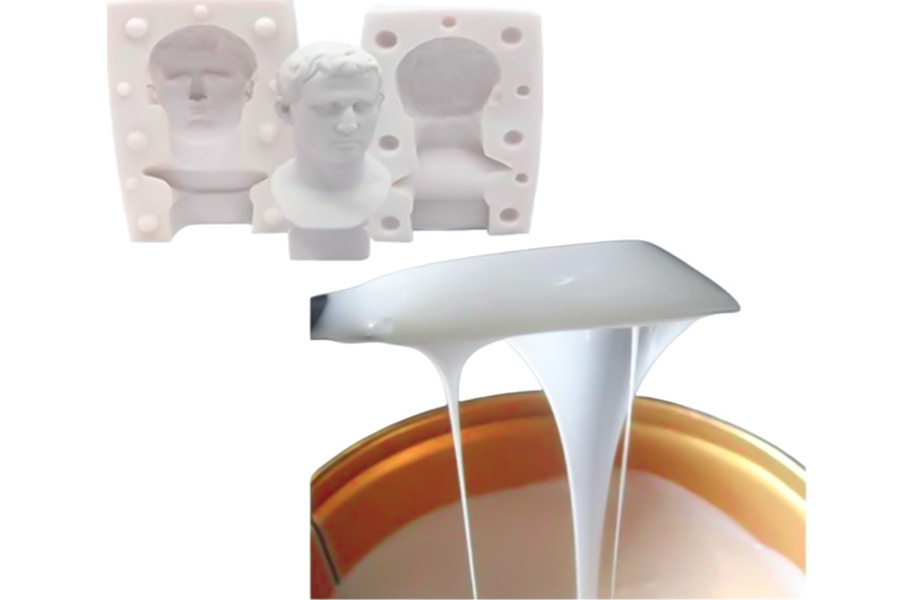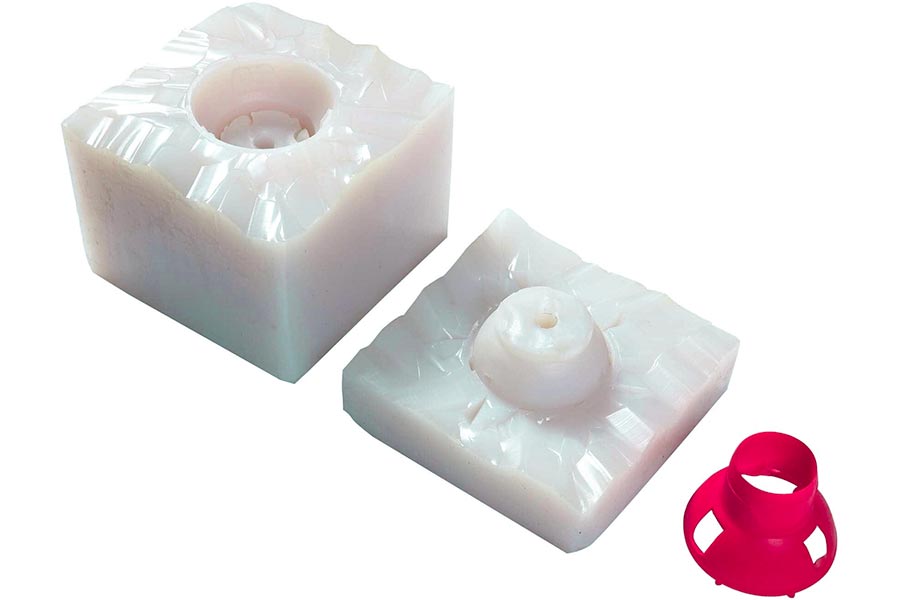As a high-performance elastic bonding material, RTV (room temperature vulcanization) silicone adhesive occupies an important position in modern industry and manufacturing due to its unique single-component room temperature curing characteristics, excellent environmental adaptability and diverse physical and chemical properties. From moisture-proof packaging of precision electronic components to high-temperature sealing of automobile engines, from durable waterproofing of building curtain walls to safe bonding of medical devices, its wide range of application scenarios not only reflects the multifunctional advantages of the material itself, but also reflects the comprehensive pursuit of industrial technology for reliability, efficiency and environmental protection
What Makes RTV Silicone Essential in Automotive Gaskets?
In the automotive industry, RTV silicone (room temperature vulcanized silicone) has become an irreplaceable core material in the field of automotive gasket sealing due to its unique properties. Its key advantages are reflected in the following two aspects:
Excellent oil resistance and extreme temperature adaptability
RTV silicone has passed the SAE J175 standard certification and can withstand long-term erosion by fluids such as engine oil and transmission oil. The applicable temperature range covers -40°C to 204°C, which perfectly matches the high temperature and high pressure environment of the engine compartment. This chemical corrosion resistance ensures that the gasket maintains sealing integrity when it is frequently in contact with oil, avoiding the risk of oil leakage.
Dynamic flexible sealing and anti-deformation ability
The RTV silicone rubber after curing has a Shore A hardness of only 25~45, and has excellent elasticity. It can absorb the micro-deformation of ≤0.2mm/m caused by thermal expansion and contraction of the cylinder head during engine operation, and continuously compensate for the gap. Compared with traditional rigid gaskets, its flexible sealing characteristics can avoid sealing failure caused by displacement of metal parts and significantly extend the life of the gasket.
Industry verification case: In the turbocharger sealing scenario, RTV silicone rubber certified by Daimler MB-Approval 331.0 is widely used. It can still stably seal the oil-gas mixture under high speed, high temperature (locally up to 250°C) and vibration environment, reduce turbo hysteresis and improve engine efficiency, becoming the "invisible guardian" of high-performance power systems.
RTV silicone, with its three major characteristics of oil resistance, temperature resistance, and elastic deformation, solves the pain points of rigid materials being prone to aging and insufficient gap compensation in automotive seals, and is the optimal solution to ensure engine reliability and durability. For automakers pursuing long-term sealing, choosing RTV silicone with compliance certification (such as SAE J175 and MB-Approval standards) has become an industry consensus.

How Does RTV Withstand High-Temperature Exhaust Systems?
In high-temperature exhaust systems, RTV silicone (room temperature vulcanized silicone) needs to face the challenges of extreme temperatures, severe thermal shock and exhaust gas corrosion. The following is an analysis of its core technologies in the field of high-performance sealing:
1. Ultra-high temperature resistance, breaking the thermal limit
Continuous temperature resistance of 343°C, peak temperature of 371°C: Red RTV silicone designed for high temperatures (such as Permatex® Ultra Copper) uses a modified silicone formula, which can maintain elasticity at a continuous high temperature of 343°C in the exhaust system, and the instantaneous temperature resistance peak reaches 371°C (such as short-term high temperature impact on the turbine interface), far exceeding ordinary silicone (usually ≤250°C).
- Anti-aging performance: It can still resist oxidation hardening in high temperature environments to avoid sealing failure caused by material embrittlement.
2. Thermal shock resistance: cope with severe temperature fluctuations
- 500 thermal cycles without cracking: passed the MIL-A-46106 standard thermal shock test, after 500 cycles between -40°C and 300°C, the adhesive layer had no cracks or peeling, proving that it can adapt to the high-frequency temperature changes of the exhaust system from cold start to full load operation to flameout.
- Low modulus design: The elastic modulus is as low as 0.5MPa, which can absorb the stress caused by thermal expansion and contraction of the metal flange and the exhaust pipe to prevent cracking of the sealing interface.
3. Strict working conditions verification of environment: verification in accordance with industry standards
- Sealing use on exhaust pipe flange: according to GM 6277M and other automobile manufacturing company standards, dedicated to exhaust pipe flanges, manifold interfaces and other critical parts, acid material contained in exhaust gas (i.e., NOx, sulfide) corrosion-resistance.
- Long-term sealing case: in performance automobiles' high-performance exhaust system, red high-temperature RTV can replace conventional metal gaskets, minimize installation difficulty and maintenance cost, and ensure leak-free performance of more than 50,000 kilometers.
High-temperature RTV silicone is now a reliable means of sealing the exhaust system due to heat-resistant enhanced composition, thermal shock-resistant integrity and required testing. It's resistant to high temperatures, has flexible compensation and chemical corrosion resistance and ranks as one of the most valuable materials for engine efficiency and environmental performance enhancement.
Why RTV is the Go-To Adhesive for Encapsulating Electronics?
The main reasons why RTV silicone is the adhesive of choice for electronic encapsulation are:
1. Excellent electrical insulation performance
- High dielectric strength: RTV silicone has a high dielectric strength of ≥18 kV/mm that can effectively insulate high voltage circuits, prevent short circuit or arc discharge, and protect precision electronic components (e.g., IC chips and sensors).
- Flame-retardant and safe: It complies with UL 94 V-0 flame retardation tests and self-extinguishes on exposure to open flame, reducing the risk of fire from overheat of electronic components.
2. Anti-vibration shock-absorption and stress diffusion
- Ultra-soft elasticity: Shear modulus ≤0.5 MPa (ASTM D4016 standard), after curing, as a soft elastomer used in vibration absorption and impact energy absorption upon equipment usage (e.g., automobile collisions, machine vibration in manufacturing).
- Compensation of thermal stress: Low thermal expansion coefficient (about 250 ppm/°C), compensating for material deformation against thermal change to avoid solder joint cracking or warping of the PCB board.
3. Broad environmental protection capability
- Dustproof and waterproof: Potted subsequently, it is IP67 protection level (ISO 20653 standard), completely sealed against dust, water vapor, salt spray, etc. and corrosive substances, and used for harsh environments such as humidity and dust (e.g., outdoor communication equipment, vehicle-mounted ECU).
- Chemical corrosion resistance: Against acids, alkalis, solvents, greases, etc. chemicals, extending the service life of electronic components under complex working conditions.
4. Meet high-precision packaging requirements
- Good fluidity: Good fluidity prior to curing, capable of filling micron-level gaps, and proper covering of complex shapes (e.g., multi-layer circuits, micro sensors).
- Low temperature curing: Low temperature or room temperature curing (-40°C to 150°C) in order not to cause high temperature curing from damaging heat-sensitive products (e.g., OLED displays, flexible circuits).
5. Application Cases and Industry Certification
- Automotive ECU module potting: used in automobile electronic control units, features vibration resistance, water-proof and high temperature performance (-50°C~200°C) to ensure driving safety, as per ISO 16750 automotive electronic reliability standards.
- Industrial-grade certification: Achieved RoHS and REACH environmental certification to meet international electronic manufacturing compliance specifications.
Selection and construction recommendations
- Priority of certification: Choose RTV silicone that has successfully passed UL, ISO and other authoritative certification to ensure performance and security.
- Pre-cure cleaning: Scrub surface gently before potting (isopropyl alcohol is employed), control the glue layer thickness (usually 2-5mm), and avoid bubble interference with sealing.
RTV silicone is becoming an "all-around" plastic for electronic packaging due to its three-in-one properties of insulation, shock and environmental resistance. It is particularly well suited to high-performance applications such as automotive, industrial, and consumer electronics.

What makes RTV the most appropriate for Aquarium & Plumbing Seals?
When used in aquatic sealing applications such as pipe engineering and aquarium construction, RTV silicone is the best by far in terms of long-term waterproofability, environmental and biosafety protection. When compared to traditional sealants, its advanced performance advantages are perhaps best described by the following examples and comparisons:
| Performance Dimensions | RTV Silicone Parameters/Certifications | Typical Values of Ordinary Sealant | Application Value |
|---|---|---|---|
| Waterproofness and Sealing | 0.5 bar water pressure/24 hours without leakage (ASTM C920 Class 25) | ≤0.3 bar tolerance, easy to leak | Ensure permanent leakage of aquarium and pipe interfaces |
| Anti-biofilm capability | EPA 600/R-10/052 certification (inhibits algae growth) | No antimicrobial certification, easy to grow mildew | Keep water clean and reduce maintenance costs |
| Bond strength | Tensile strength ≥1.4 MPa (glass-glass interface) | Usually ≤0.8 MPa | Ensure the safety of large fish tanks and pressure pipe structures |
| Environmental safety | 100% solvent-free, non-toxic after curing (FDA 21 CFR 175.300) | Contains VOCs, may release harmful substances | Suitable for fish living environment and drinking water pipes |
Scenario verification: from laboratory to actual application
Aquarium panoramic glass bonding
Use RTV silicone to splice ultra-white glass (thickness ≥15mm). After curing, the light transmittance of the glue joint is >90%, and the tensile strength reaches 1.6MPa. It can resist the side pressure and impact load of the water body, and avoid the risk of glass debonding and explosion.
Anti-algae test: In simulated light + eutrophic water, the algae attachment area on the surface of the RTV glue joint is reduced by 70% (compared with ordinary glue), significantly reducing the cleaning frequency.
Drinking water pipe sealing
Food-grade RTV silicone certified by NSF/ANSI 61 is used for PVC/PPR pipe fittings connection, resistant to water pressure fluctuations (peak 1.2MPa), and no plasticizer is precipitated after long-term immersion, ensuring water quality safety.
RTV silicone has the triple characteristics of "zero penetration + anti-biological contamination + high-strength bonding", which solves the core pain points of sealing failure, sanitation hazards and structural looseness in water-related scenes. Whether it is a crystal clear aquarium landscape or a hidden water supply network, its performance has been verified by strict standards, becoming a benchmark sealing material that takes into account safety, durability and beauty.

How Does Medical-Grade RTV Meet FDA Requirements?
In the field of medical device manufacturing, medical-grade RTV silicone must pass rigorous biological evaluation and sterilization verification before it can be approved by the FDA (U.S. Food and Drug Administration). The following is a core analysis of its compliance design and practical application:
1. Biocompatibility: Ensure human contact safety
USP Class VI + ISO 10993-5 dual certification:
- Acute systemic toxicity: There is no abnormal reaction in experimental animals after injection of the extract, proving that the material is non-toxic.
- Cytotoxicity: Co-cultured with L929 mouse fibroblasts, cell survival rate ≥ 90% (ISO 10993-5).
- Intradermal irritation: No inflammation or necrosis after 28 days of subcutaneous implantation in rabbits (in compliance with USP Class VI).
- Long-term implant safety: Some high-grade products have passed ISO 10993-10 sensitization and ISO 10993-6 chronic toxicity tests, and are suitable for sealing implantable devices.
2. Sterilization tolerance: Adapt to medical sterilization process
| Sterilization method | Test standard | RTV silicone performance |
|---|---|---|
| High-pressure steam sterilization | AAMI ST79 | 121°C×30 minutes 50 cycles, hardness change ≤10% |
| Ethylene oxide (EO) | ISO 11135 | No residual gas adsorption, air permeability retention rate>95% |
| Gamma irradiation | ISO 11137 | 50kGy dose irradiation, tensile strength retention ≥85% |
3. Clinical verification case: Respiratory mask seal (FDA 510(k) K203385)
- Functional requirements: Airtightness to prevent oxygen leakage (leakage rate <5%), no allergic reaction on facial skin.
- Use medical-grade RTV silicone to adhere the mask silicone pad and PC shell ideally, tensile strength ≥1.2MPa.
- The adhesive layer is not deformed or discolored after EO sterilization, and there is no sensitization report within the area of skin contact under ISO 10993-10.
Results: The incidence of adverse events after product marketing is <0.01%, affirming the clinical dependability of the material.
Medical RTV silicone meets the FDA's mandatory requirements on medical device material through the tripartite compliance avenue of biocompatibility, sterilization tolerance, and clinical scenario verification. Low allergenicity, sterilization resistance, and variable hardness (Shore A 10-80) are the reasons why it is a safe sealing solution for respiratory equipment, surgical devices, and wearable medical sensors.
Why Use RTV for Industrial Mold Making?
In industrial mold manufacturing, RTV (room temperature vulcanized) silicone has been the preferred material for replicating intricate prototypes and precision casting due to its unique physical properties and process flexibility. What follows is the discussion of its indispensability from the perspectives of performance parameters, application scenarios and comparative analysis:
1. Excellent demoulding property: reduce the damage rate of complex structures
| Performance indicators | RTV silicone parameters | Traditional mold materials (such as polyurethane) | Advantage analysis |
|---|---|---|---|
| Surface tension | ≤22 mN/m(ASTM D2578) | Usually ≥35 mN/m | Reduce the dependence on demoulding agents and avoid adhesion or tearing of prototypes |
| Shrinkage | ≤0.1% | ≥0.5% | Ensure mold dimensional stability and improve replication accuracy |
Application situations: In deep cavity structure molds (e.g., internal gear teeth, relief textures), low surface tension makes silicone release easily from complex geometry without detail loss by friction.
2. Ultra-fine detail replication: restore micron-level details
5μm Resolution (according to the VDI 3400 standard): RTV silicone has better fluidity, and can completely fill up the fine protuberances on the prototype surface (for example, rust marks on cultural artifacts, logos of precision components), and reproduce true to shape 5μm-level details after curing.
Low viscosity formulation: the mixed material's viscosity is as low as 3,000 mPa·s (e.g., Dragon Skin® series), suitable for pour, brush or vacuum infusion processing, and can work well with porous or dense prototype materials (resin, wax, plaster, etc.).
3. Flexible accommodation and durability: balance accuracy and lifespan
| Mold type | Hardness (Shore A) | Applicable scenarios | Cycle times |
|---|---|---|---|
| Reproduction of high-detail cultural relics | 20±5 | Fragile cultural relics (such as pottery, murals) re-molding | 50-100 times |
| Industrial parts casting | 30-50 | Resin, low melting point alloy casting | 200-500 times |
| High wear-resistant consumables mold | 60-80 | Polyurethane, rubber product production | 1000+ times |
Case: Copying of bronze cultural artifacts
The master mold was made of Shore A 20 silicone, and the Warring States period's 0.1mm surface inscription on the bronze ware was successfully copied, and its oxide layer remained intact when demolded, proving its perfect balance between low hardness and high reducibility.
- Wide temperature resistance range: -50°C to 230°C (short term), suitable for process temperatures such as resin curing and melting of wax mold.
- Two-component fast curing: variable working time after mixing (10-60 minutes), no need for hot pressing equipment, suitable for on-site re-making of the mold or small batch production.
RTV silicone takes "zero damage demolding-micron-level replication-flexible and durable" as its fundamental competitiveness, eradicating the shortcomings of traditional mold materials in complex structures, fragile models and high precision requirements. Whether preserving cultural heritage or precision industrial casting, its processing has been certified in line with international standards and is currently the gold industry standard for cross-industry mold production.

What Makes RTV Different from Traditional Silicone Sealants?
In the seal and bonding business, even though RTV (room temperature vulcanized) silicone and standard silicone sealants are both silicone products, their behaviors, processes, and application conditions are very different. The following basic parameter comparison and scenario analysis will help you make appropriate choices:
Core difference comparison
| Comparison dimension | RTV silicone | Traditional silicone sealant | Difference impact |
|---|---|---|---|
| Curing mechanism | Room temperature moisture curing (no heating required, fully cured in 24 hours) | Heating or UV light is required to initiate curing | RTV is easy to operate and suitable for on-site repairs and non-planar construction |
| Bond substrate range | Metal/glass/plastic (surface energy ≥35 mJ/m²) | Mainly limited to high surface energy materials such as glass and ceramics | RTV is suitable for more engineering materials and reduces surface treatment costs |
| Temperature resistance | -60°C~250°C (some high-temperature types reach 350°C) | Usually -40°C~200°C | RTV is suitable for high-temperature scenes such as engine compartments and electronic cooling |
| Certification level | Aviation-grade RTV is certified by NAS 1613 Class II and other certifications | Mostly meet construction/general industrial standards (such as ASTM) | RTV meets strict industry specifications (such as aerospace, medical) |
| Elastic modulus | 0.2~2.0 MPa (adjustable) | Usually ≥3.0 MPa | RTV has higher flexibility and better shock resistance and cushioning properties |
Scenario-based selection guide
Aviation equipment sealing (NAS 1613 Class II certified RTV)
- Specifications: Fuel and hydraulic oil resistance, no leakage at -55°C~230°C cycles.
- Advantages: RTV silicone meets the swelling rate ≤5% (ASTM D471) and low volatility (≤0.5%) tests and meets the avionics equipment packaging specifications.
Automotive lampshade bonding (surface energy compatible with plastic substrate)
- Problem: PC/PMMA lampshade (surface energy of about 34~38 mJ/m²) tends to delaminate when bonded to the metal frame.
- Solution: Apply RTV silicone whose surface energy limit is ≥35 mJ/m², and its peel strength is increased to ≥4 N/mm (compared to ordinary glue ≤2 N/mm).
Caulking for building curtain wall (high displacement capacity requirement)
- Drawbacks of ordinary glue: high modulus, difficult to accommodate joint expansion and contraction of more than ±25%
- RTV solution: 50LM-grade low modulus RTV (displacement capacity ±50%), follows the thermal expansion and contraction of concrete, and extends sealing life by 2~3 times.
RTV silicone broke the bottlenecks of traditional silicone sealants in terms of process efficiency and performance limitation through its characteristics of "rapid curing at room temperature, broad-spectrum substrate bonding, and high environmental tolerance". Tailorable hardness, modulus, and certificate level make it a hard material suitable for high-end applications such as aerospace, precision electronics, and high-temperature industrial uses, while traditional silicone sealants are optimally suited to static, low-load general sealing conditions.
When Should RTV Not Be Used?
Though RTV silicone delivers excellent performance, in certain extreme or dynamic conditions, it can pose safety hazards or failure risks. The following compiles industry best practices and failure examples to describe its prohibited use and provide scientific alternatives for assisting you to avoid material selection errors.
RTV silicone prohibited scenarios and alternatives
| Prohibited scenarios | RTV silicone risks | Alternative materials | Compliance certification/performance |
|---|---|---|---|
| High-pressure pure oxygen environment | Low oxygen index (ASTM G86 test flammable) | Perfluoroether rubber (FFKM) | NASA-STD-6012 (aviation oxygen system compatible) |
| High-frequency dynamic seal | Insufficient wear resistance (wear rate>0.5mm³/N·m) | Fluorosilicone rubber (FVMQ) | ASTM D2000 M4EE (reciprocating seal grade) |
| Direct food contact | Non-certified models may precipitate plasticizers | Food-grade platinum-cured silicone | FDA 21 CFR 177.2600、EC 1935/2004 |
| Strong acid/alkaline media | Swelling rate>30% when in long-term contact with pH<2 or pH>12 | Polytetrafluoroethylene (PTFE) | DIN 28120 (chemical sealing standard) |
Thorough testing and analysis of conditions
High-pressure pure oxygen equipment (e.g., medical ventilators, space vehicles)
- Hazard: RTV silicone will spontaneously ignite when exposed to sparks in 0.3MPa pure oxygen (ASTM G86 oxygen index <28%).
- Alternative solution: Perfluoroether rubber (FFKM) oxygen index ≥95%, 10MPa oxygen pressure resistance, for International Space Station oxygen valve sealing.
- Case: Rubber coating over a medical hyperbaric oxygen chamber carbonised at 40% oxygen concentration due to sealing gasket RTV abuse. When replaced with FFKM, it passed the ISO 15001 test.
Hydraulic cylinder reciprocating rod seal (engineering machinery)
- Failure mode: RTV silicone due to 10Hz reciprocating motion, 0.8mm wear depth after 3 months (ASTM D3704 test), leading to oil leakage.
- Alternative solution: FVMQ fluorosilicone dynamic friction coefficient ≤0.3, 5 times better wear resistance, compliant with ASTM D2000 M4EE.
Food filling line seal (dairy use)
- Regulatory limit: Non-FDA 21 CFR 177.2600 compliant RTV may leach D4/D5 siloxane (EU ban <0.1%).
- Compliance solution: Food-grade platinum catalyzed silicone, no migration was detected after 3% acetic acid simulated liquid immersion (40°C×10 days), used for yogurt filling valve sealing.
RTV silicone is not a "universal adhesive" and has certain limitations in high-oxygen, dynamic, highly corrosive, and food contact use. By preventing work condition hazards, citing industry ban standards (e.g., ASTM, FDA) and selecting targeted alternative materials, the reliability and compliance of the sealing system can be made more effective.

Summary
RTV silicone adhesive has become an essential material in various industries such as electronic packaging, automotive sealing, medical device assembly, industrial mold making and building waterproofing due to its unique room temperature vulcanization characteristic, fine extreme temperature performance (-60°C to 350°C), good chemical inertness and elastic deformation ability. It is widely applicable for metal, plastic, glass and other materials and offers high reliability and long-term sealing in complex working conditions. It is an indispensable high-performance product in cross-industry precision bonding and protection engineering.
📞 Phone: +86 185 6675 9667
📧 Email: info@longshengmfg.com
🌐 Website: https://lsrpf.com/
Disclaimer
The content of this page is for informational purposes only.LS SeriesNo representations or warranties of any kind, express or implied, are made as to the accuracy,completeness or validity of the information. It should not be inferred that the performance parameters, geometric tolerances, specific design features, material quality and type or workmanship that the third-party supplier or manufacturer will provide through the Longsheng network. This is the responsibility of the buyerAsk for a quote for partsto determine the specific requirements for these parts.please Contact us Learn more information.
LS Team
LS is an industry-leading companyFocus on custom manufacturing solutions. With over 20 years of experience serving more than 5,000 customers, we focus on high precisionCNC machining,Sheet metal fabrication,3D printing,Injection molding,metal stamping,and other one-stop manufacturing services.
Our factory is equipped with more than 100 state-of-the-art 5-axis machining centers and is ISO 9001:2015 certified. We provide fast,efficient and high-quality manufacturing solutions to customers in more than 150 countries around the world. Whether it's low-volume production or mass customization,we can meet your needs with the fastest delivery within 24 hours. chooseLS TechnologyIt means choosing efficiency, quality and professionalism.
To learn more, please visit our website:www.lsrpf.com

FAQs
1. What are the main uses of RTV silicone adhesives?
RTV silicone adhesives are widely used in electronic component packaging (moisture-proof insulation), automotive engine sealing (oil-resistant and high-temperature resistant), medical device bonding (biocompatibility), building curtain wall caulking (waterproof and earthquake-resistant) and industrial mold manufacturing (precision replication). Its room temperature curing, elastic deformation and extreme temperature resistance (-60°C~350°C) make it the preferred material for high-reliability bonding and sealing across industries.
2. How high a temperature can RTV silicone withstand?
The continuous temperature resistance range of conventional RTV silicone is -60°C to 250°C, while high-temperature special models (such as iron oxide formulas) can withstand short-term peaks of 350°C (such as exhaust pipe sealing) and have been verified by standards such as SAE J175 and MIL-A-46106. It is suitable for automotive turbochargers, industrial high-temperature equipment and other scenarios.
3. What is the difference between RTV silicone and traditional silicone sealant?
RTV silicone can be vulcanized at room temperature without heating, and is suitable for a variety of substrates such as metal and plastic (surface energy ≥35mJ/m²), and has passed NAS 1613 aviation-grade certification; traditional silicone sealants mostly require heat curing and are only suitable for high surface energy materials (such as glass). The performance focuses on building sealing, and the temperature resistance and chemical stability are lower than RTV.
4. Can RTV silicone be used in food contact scenarios?
Only food-grade RTV silicone certified by FDA 21 CFR 177.2600 or EC 1935/2004 can be used for non-direct contact food equipment sealing (such as filling lines). Platinum-cured silicone must be used for direct contact to avoid small molecule precipitation contamination. Non-certified models have safety risks in food environments.







